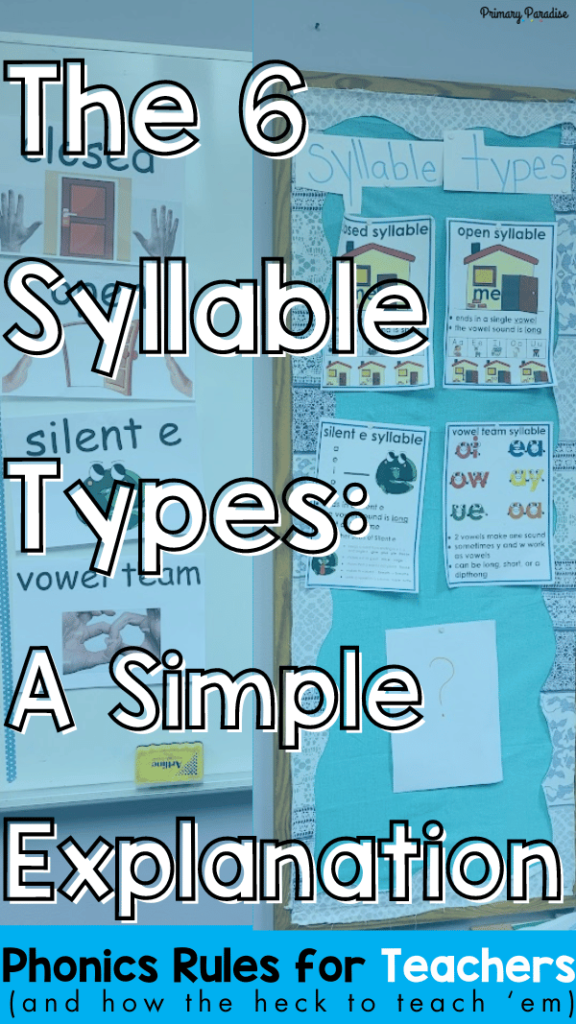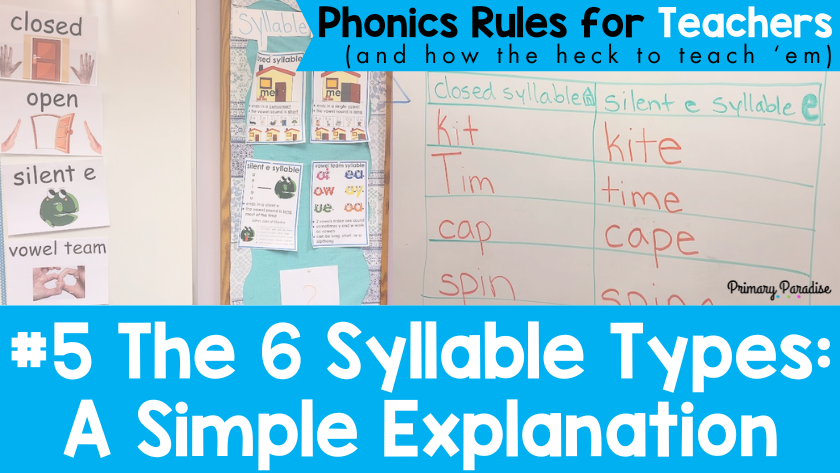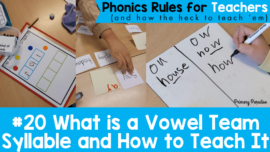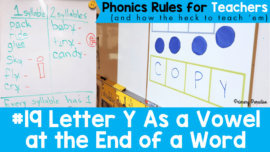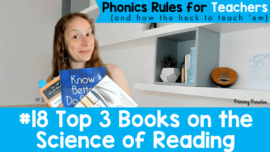Understanding the basics of the 6 syllable types is a great place to start with if you already know what a syllable is and why you should teach it to your students. The What and Why were covered in the last post of Phonics Rules for Teachers (and how the heck to teach ’em) . Now we’ll explore each of the six syllable types and look at some examples.
This is post 5 in my series Phonics Rules for Teachers (and How the Heck to Teach ‘Em). If you’d like to see previous posts, you can click here.
Would you rather listen or watch? Find a podcast version of this blog post here, or watch the video below.
What are the 6 syllable types?
Let’s take a look at the 6 syllable types and the general rules for each. This is also the order in which I teach syllable types. While students can begin determining the number of syllables even before knowing all of their letter sounds, I don’t begin to teach specific syllable types until we are beginning to focus on short vowels and CVC words.
Closed Syllable

A closed syllable ends in a consonant and the vowel typically makes a short sound. Closed syllables also only ever have a single vowel letter. If there are 2 or more vowel letters in a syllable, it’s not closed. Closed syllables make up just about 50% of all written words. Words with these spelling patterns are closed syllable words: VC, CVC, CVCC, CCVC, CCVCC or CVCCC. You can see exactly how I introduce closed syllables here.
Some examples of words with only closed syllables are:
- 1 syllable: on, map, wish, thin, shush, catch
- 2 syllable: happen (hap/pen), problem (prob/lem), bathtub (bath/tub)
- 3 syllable: fantastic (fan/tas/tic), magnetic (mag/net/ic), basketball (bas/ket/ball)
Open Syllable
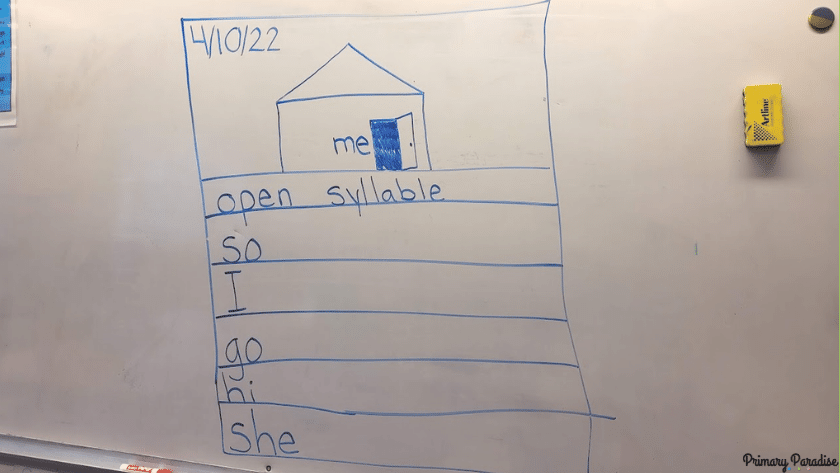
An open syllable ends in a single vowel letter and usually has a long vowel sound. It also often has a schwa sound (ie, the sound at the end of my name: Martha). Open and closed syllables make up about 75% of written syllables in English, so if students know just these two syllable types, they can read a lot of words! You can see exactly how I introduce closed syllables here.
Some examples of words with only open syllables are:
- 1 syllable: I, me, no, go, so, my, fly, we, she
- 2 syllable: redo (re/do), baby (ba/by), taco (ta/co)
- 3 syllable: potato (po/ta/to), banana (ba/na/na)
Silent e Syllable
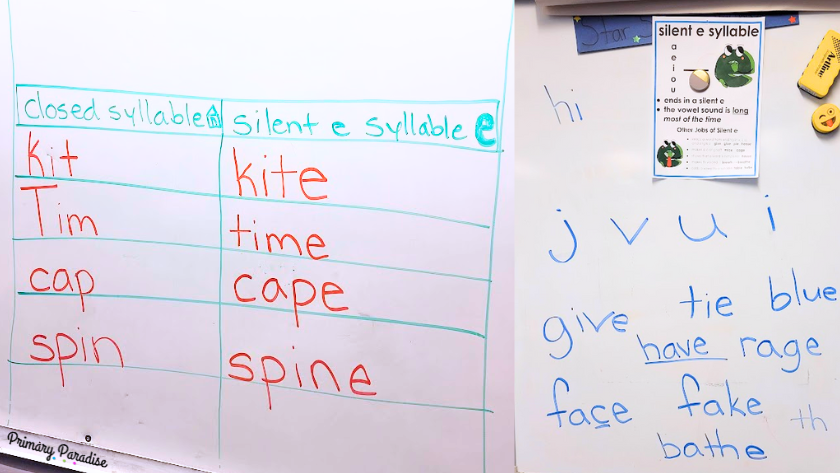
A silent e syllable has a single vowel, a consonant, and then a silent e. This can also be a split digraph because we have two letters representing one sound, but split by a consonant. While silent e syllables often have a long vowel sound, that isn’t the only job of a silent e. Let’s take a closer look at the 6 jobs of silent e.
Silent e’s jobs are:
- represent a long vowel sound- kite, hope, mate
- prevents a word from ending in v, i, u, and z- give, glue, pie, freeze
- makes c or g soft- mice, have and can make s represent a /z/ sound
- shows that a word is not plural- house, mouse
- makes th voiced- breath to breathe
Some examples of words with silent e syllables are:
1 syllable: gave, use, nose, these, cake, pile, rose, cute, have, wise, wave, rice
multisyllabic words (silent e syllables are bold): homemade (home/made), milestone (mile/stone), rosemary (rose/mary), compensate (com/pen/sate).
R Controlled Syllable
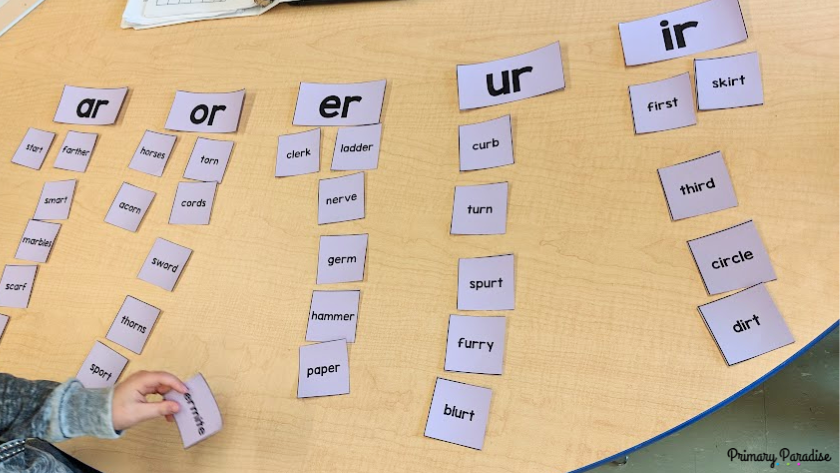
An r controlled syllable has a vowel letter followed by an r. The vowel sound is changed by the r. This includes these spelling patterns: ar, or, er, ir, ur. You can find a free, printable word list of r controlled words grouped by spelling pattern here.
Some examples of words with r controlled syllables are:
1 syllable: car, start, fort, born her, fern, bird, first, hurt, purse
multisyllabic words (r controlled syllables are bold): partner (part/ner), order (or/der), hamburger (ham/bur/ger), morning (mor/ning), circular (cir/cu/lar)
Vowel Team Syllable
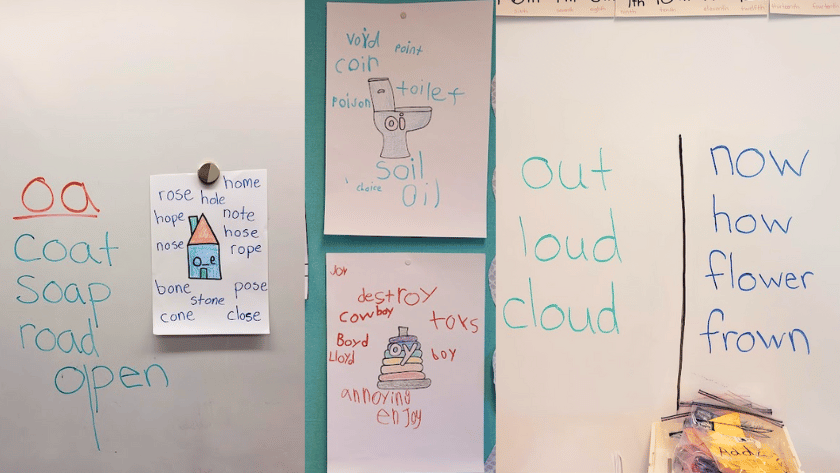
A vowel team syllable is made up of two more vowel letters making one sound. Vowel teams can represent long vowel sounds, short vowel sounds, and diphthong sounds. (A diphthong is, simply put, a vowel sound that slides through more than one sound- think ew as in chew, oy and in toy, and ow as in cow.) Vowel teams can include letters that don’t typically represent vowel sounds (and this is why understanding the difference between letters, sounds, consonants, and vowels is so important.)
When teaching vowel team syllables, since the vowel sound will depend on the spelling pattern and the word, it’s best to teach each spelling pattern in context.
Vowel team examples: ee, ea, aw, ai, ay, ow, ue, igh, ou
1 syllable: eat, bread, saw now, right, few, pool, goat, coin, steak, glue stay
multisyllabic words (vowel team syllables are bold): cookout (cook/out), boastful (boast/ful), breakfast (break/fast), remain (re/main)
Consonant le Syllable
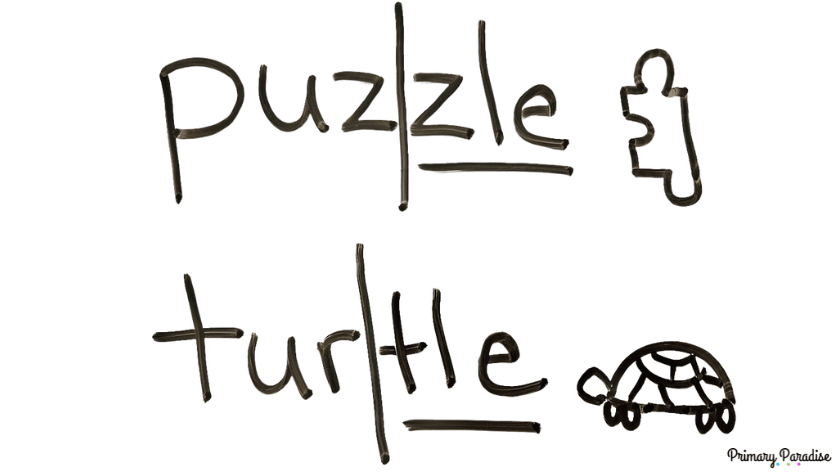
A consonant le syllable is a final syllable that has a consonant, l and e. It comes at the end of a word, and the e is silent. As we’ve already learned, every syllable needs a vowel. While the e is silent, it is typically pronounced with a schwa sound like- /ul/.
Examples of words with a consonant le syllable: table, cycle, freckle, needle, handle, purple, cuddle, puzzle
If you came here wondering “What are the 6 syllable types?”, now you should have a good understanding of syllables. In the next post, we’ll cover the most important part… how the heck to teach ’em!
